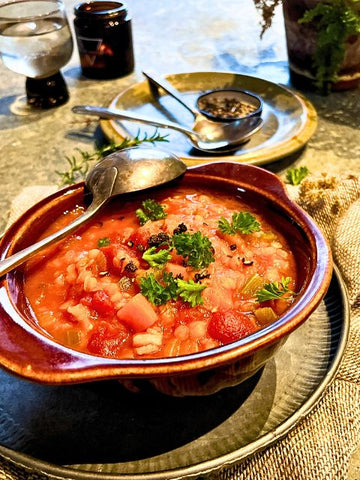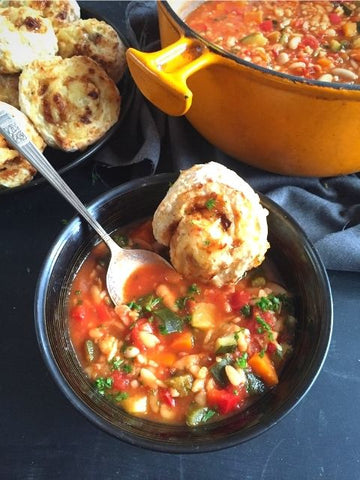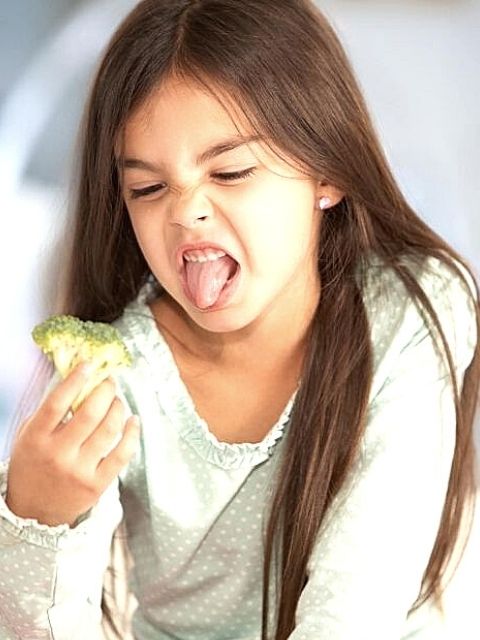How to Fix a Fussy Eater
Fruit and vegetables are inexpensive, healthy and delicious, and large numbers of kids – and adults - simply don’t eat enough of them for good health.
Many of us have to contend with picky eaters. It is easy to presume that we are just talking about children, but while children are the consummate picky eaters, there are plenty of picky parents, grandparents, partners, flatmates and home- stay students. (Too spicy, too foreign, too bland, too many vegetables, too many complaints!)
Conforming to the picky eaters personal “Official Approved Foods List” may provide short-term relief, but in the longer term it just exacerbates the problem.
The picky eater becomes brand specific, often only eating name brand products, packet foods and snacks. This kind of pedantry is all very well if money is no object, but when you have to watch what you spend it’s not just self indulgent it’s expensive.
Special “Children’s food” is an added burden on the grocery budget.
Much of the attraction of these foods is the packaging; those expensive little individual servings are just so appealing. The advent of children’s food seems to be a relatively new thing. Traditionally kids ate pretty much what the adults were eating. There was dinner for dinner, you ate it or you went without. It is increasingly common these days for the kids to eat an entirely separate meal from the adults, who then eat later in the evening.
Preparing several different meals is hard work, so increasingly the kids have quick, easy to cook foods such as nuggets, noodles and burgers because even the pickiest eaters will eat them without a fuss.
We rationalise feeding kids processed food because “at least it won’t go to waste. If I make something proper they won’t eat it” or “the kids can get away with it more than adults, after all most of them are slim, they’ll burn it off”. Sadly that’s no longer true.
-
Only about two out of five children met the recommended number of serves of fruit (at least two per day).
-
About three out of five children met the recommended number of serves of vegetables (three or more per day).
-
And 31% of children were either overweight or obese.
A more up to date National Nutrition Survey is long overdue and experts have been calling out for this to happen but regardless of the age of the survey, its unlikely that things have actually improved since there has been no significant change to the way food is marketed to children or "children's food" is marketed to parents.
Picky eaters not only suffer nutritionally, as they get older they become increasingly socially disadvantaged.
Not being able to eat a variety of foods may be problem when the work Christmas do is a Thai buffet, your top client invites you to lunch at a Japanese Restaurant or your flatmate who cooks every second night is a vegan.
You may not be able to change the habits of your partner or flatmate but you can influence your kids, so start early. Here are some of the techniques I’ve found work well.
How not to grow a picky eater
- Start when they are little if you can. With Babies and toddlers pull the high chair up to the table when the family are eating. Even if baby has been fed, she will see what others are eating. As she gets older and can feed herself, let her taste and handle a little off your plate, including her in the meal.
- Avoid giving a drink of milk or juice just before a meal, picky eaters will fill up on the drink then say they aren’t hungry or eat poorly as they have spoilt their appetite and missed an opportunity to eat real food
- Avoid using dessert as a bribe. “If you don’t eat your dinner you won’t get any dessert”, implies to the picky eater that eating dinner warrants a reward. Cannily they will negotiate exactly how many mouthfuls constitute “eating dinner” in order to get dessert. The resulting series of compromises highlights dessert and diminishes the importance of dinner altogether – just don’t go there.
- Never say to the kids “you won’t like this” they’ll most likely believe you.

Significant research was conducted by Otago University in relation to children's response to new foods. They discovered that children experience what they call "Neophobia" or simply put it's a genetic predisposition to reject or fear new foods. The response is normal and protects the child should it be offered a food which could be toxic. They determined that it may require as many as 10 tastes or offerings of the new food before it is accepted.
So when they tell you they don’t like it, remember they may simply be afraid of it. You need to keep offering the food. And as it can take as many as 10 tastes before they accept it, you need a strategy.
We have used and taught “the one bite rule” for over a decade with great success. It’s a brilliant strategy for helping picky eaters adjust to new foods that they insist they don’t like.
The "One Bite" Rule
-
If for example a child won’t eat any green vegetables, using the one bite rule you will include a single mouthful of a green vegetable with their dinner every night, it must be the same variety of green vegetable for 7-10 nights. We present a meal, which includes a small serve of a vegetable that the child insists she doesn’t like. We say “you must have one bite. If you don’t, then you must leave the table immediately and get ready for bed” (missing out on family time and story). The children weep, groan and even gag but rarely choose to send themselves to bed over just one bite.
-
Although they make a great show of nearly vomiting, actual allergic reaction is pretty unlikely particularly after you point out that “People who are vomiting at the table are clearly unwell and must get down from the table and go immediately to bed without a story as they must get a good sleep so they are well again in the morning”
-
What is more likely is that as the week progresses, they tire of putting on the whole song and dance for just one bite, they gradually become accustomed to the texture and flavour of the feared food, and while they may not necessarily like it, they have learnt to eat it.
When they can eat one bite without a fuss you have them! The next night put 3 pieces of the now familiar vegetable on their plate and introduce one mouthful of another feared food, they will be so busy obsessing about the new food they won’t even notice that they have eaten the other.
As adults we eat many foods that are not our favourites, which we don’t even necessarily “like”. We eat them because we have learnt to, because they ingredients and are good for us, and because it is good manners. Many of our children are operating under the illusion that they should only have to eat what they like.
Research indicates that our taste for fresh foods continues to develop throughout our life time so it’s never too late to learn to like a new fruit or vegetable. Our taste for protein foods may be linked to our genes so it’s harder to influence a palate towards a disliked meat or fish, but as most of us consume more protein than we need this is less of an issue.
The reference for this information is
H.A. Guthrie, "Development of Food Acceptance Patterns in Early Childhood" In Touch. 16(3): 1-3 (1999)












